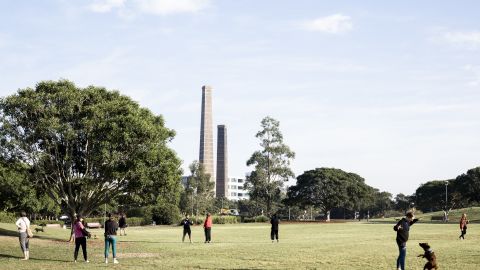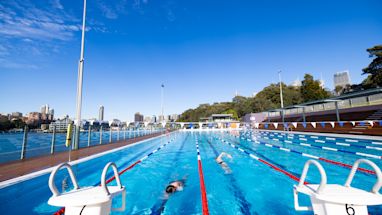Built in the 19th century and located in the north-west corner of the park, they’re a symbol of the city’s industrial heritage and hold historical and cultural significance.
In 2017, we restored 2 of the 4 chimneys to ensure the historical brickworks were maintained and conserved.
We now need to further stabilise the structures and plan to renew the landscaping in this area to create a welcoming space for our communities.

The Sydney Park brick kiln and chimney precinct contains substantial remains from the brick making industry that once dominated the area. Shale was extracted from deep pits, crushed and pressed into green bricks that were fired in the large kilns.
The proposed improvements will sensitively incorporate the park’s industrial past.
“The kilns and chimneys at Sydney Park are culturally important and we want to embed the site’s history into the landscape,” Lord Mayor Clover Moore said.
“The City of Sydney is a leader in marrying historical structures and green space, such as at the wonderful Paddington Reservoir Gardens, and we’re ready to create another memorable space at Sydney Park,” the Lord Mayor said.
Our plans
When we previously consulted our communities about this project, you told us improved access and creating a more welcoming space were important.
We engaged Tonkin Zulaikha Greer Architects and JMD Design to review community feedback, consider the site’s context and develop a concept design.
Proposed works include:
- a raised lawn area and plaza spaces for small outdoor gatherings
- interpretation of the site’s heritage including paved outlines of kilns, rail tracks and brick pits that once existed in the park
- better access to the area from the Princes Highway
- stabilisation of the brick kilns and the reinstatement of roofs on the structures.

Our communities expressed interest in using the inside of the kilns as places for business, culture and events. The constraints of these spaces, including structural and safety issues, mean we are unable to explore adaptive reuse of the brick kilns as part of this project.
But planned work will retain the site’s industrial character and create a special place in the landscape for the community to enjoy.
History of the brick kilns
The north-west part of the park is on the edge of a Wianamatta shale belt from which brickmaking clay was extracted in the 19th and 20th centuries.
Before European settlement, Sydney Park would have been a forest of turpentine and ironbark trees. Local Aboriginal peoples, the Gadigal and Wangal, hunted kangaroo on the grasslands here, and fished and camped at the swamps, creeks and rivers that crisscrossed the area.
The rich soil was considered ideal for gardens and orchards, as were its clay beds for pottery and brickmaking. A number of brick, pottery and tile works were established in the area from the early 19th century to take advantage of this readily available resource.

Brickmaking became a major industry on the Sydney Park site and continued until the 1970s. In 1948, the deep clay brick-pits became a major municipal waste depot for Sydney. Household rubbish was dumped in the former brick-pits until 1976. When the St Peters tip was closed, a final layer of soil and building rubble was placed over the former brick-pits to create a new regional park.
Our proposed concept design features a heritage interpretation of old railway tracks, the outline of the clay pit and footprints of demolished buildings to reveal the untold history of brickmaking on the site.
Have your say
Explore the concept design and have your say online.
You can also talk to us at Sydney Park on 16 July or attend an online information session on Wednesday 13 July, 5:30pm to 6:30pm. Register.
Consultation closes at 5pm on Friday 29 July.
Published 11 July 2022, updated 12 July 2022



